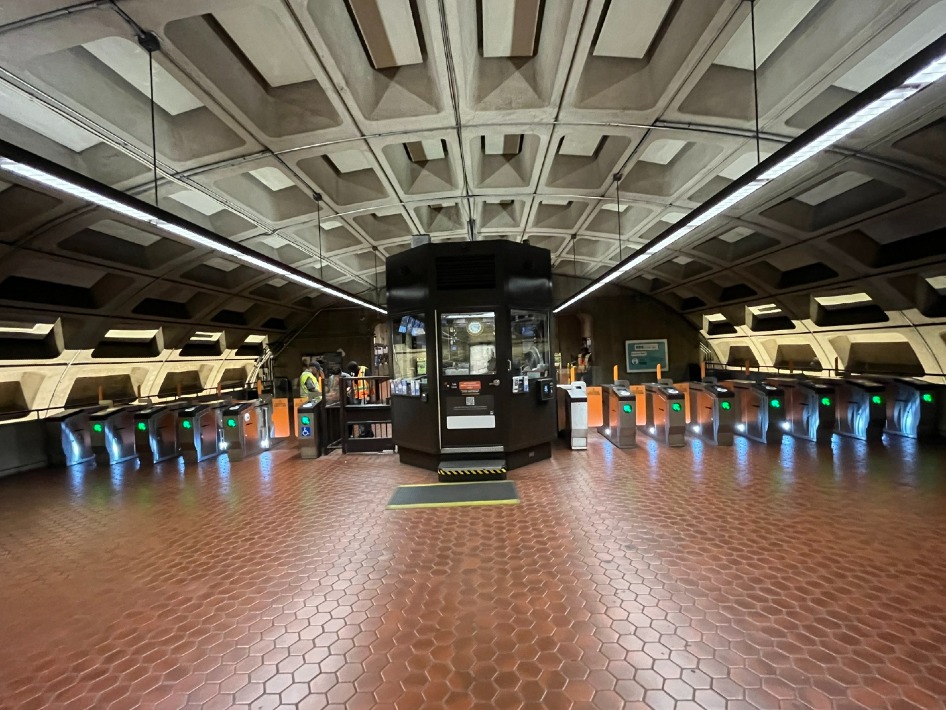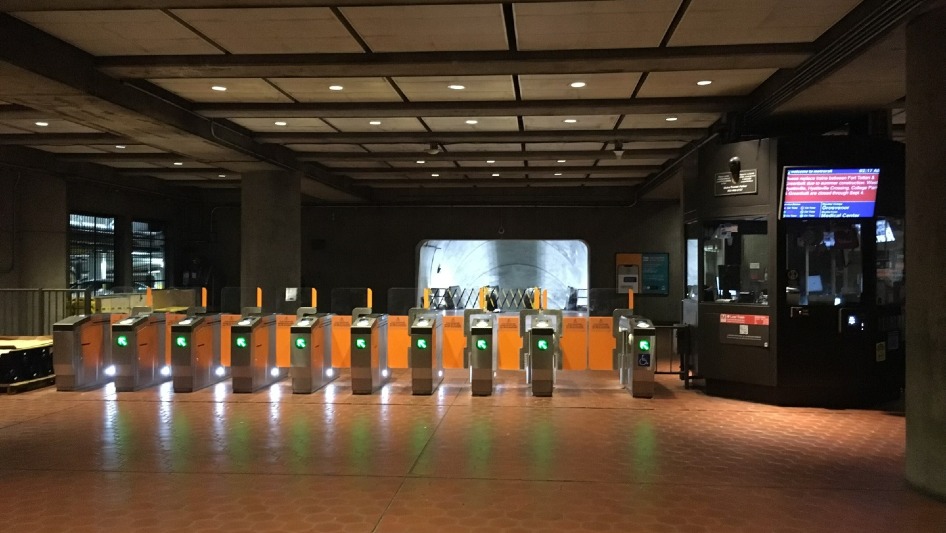Faregate for WMATA
Key Facts
- Industry
- e-Payment
- Region
- Washington in USA
- Product
- Fare Gate
- Solution
- AFC
Introduction

WMATA(Washington Metropolitan Area Authority) was engineered with attention to aesthetics and design as integral to its form and functionality as a transportation system for Washington, D.C., as the nation's capital.
As the next step in its fare modernization program, WMATA selected STraffic to introduce a new and technologically advanced faregate design and operating system.
STraffic designed and manufactured the new faregate to deliver the highest levels of reliability, performance, and security available in the industry. Features include flexible, user-friendly and ADA compliant design that assures that fare gates admit fare-paying riders with safety, convenience, and ease while maintaining order, security, and revenue accountability.
To enhance user interfaces for all end-users, particularly WMATA's internal staff, STraffic has provided web-based GUIs for the Faregate Central System (including Station Terminals and Portable Station Manager Devices) that provide easily read, color-coded display for showing the status of each Mezzanine and fare gates. The new faregates and central operating system fully integrate with WMATA's legacy fare payment system to provide seamless, reliable access to Metro subway service.
Challenges
In April 2018, STraffic established a wholly owned subsidiary, STraffic America LLC, to expand into the global market, including the United States, thereby boosting its US business. Under the leadership of President Moon Chan-Jong, STraffic participated in the WMATA bidding process and proposed a differentiated strategy. This effort culminated in a $40 million contract for the Washington Metro’s Fare Gate project, signed in July 2019. By December 2022, STraffic had installed 1,300 clamshell-style barrier-type fare gates and a central control center system across 91 regional stations in Washington, D.C. In 2022, STraffic signed an additional $35 million contract with WMATA, facing a $40 million deficit due to fare evasion, to improve gates (Barrier Performance Study) and replace the existing gates with swing-door-style barriers.
Background of Barrier Performance Study
WMATA has conducted various research and improvement projects to ensure passenger safety, system efficiency, and operational cost reduction. One of these is the Barrier Performance Study, which assesses the performance of physical ‘barriers’ in regional and traffic systems and seeks to improve passenger safety. One reason for this was the need for a physical infrastructure that could protect passengers and employees from the risks of terrorism or crime while efficiently managing escape routes for passengers in the event of an accident. WMATA also aimed to address the congestion problem on the commuting route through effective traffic flow manage-ment. To do this, it was necessary to analyze how barriers’ location, design, and function affected passenger journeys and provide data to enhance the system’s operational efficiency. Along with developing technology, they
also sought to improve infrastructure by integrating new smart technologies, including automatic access control systems, facial recognition, and sensor-based security technologies, with public transportation systems. Furthermore, one of WMATA’s main tasks was to build an eco-friendly and sustainable transportation system. Additionally, reinforcement of regulations from the Federal Transportation Administration (FTA) and the Department of Homeland Security (DHS) regarding public trans-portat ion safety a lso necessitated establishing a new barrier system that complied with the latest safety regula- tions. STraffic successfully met these requirements and established a solid foothold in the North American traffic market.
Solution
STraffic Appears in the American Press
On August 22, 2023, the Washington Post published an article detailing STraffic’s equipment. According to the article, “[WMATA] announced that modified fare gates have cut fare evasion by 70 percent” where they have been installed. The most significant improvement occurred at the Mount Vernon Square station, where the fare evasion rate dropped from 15% to just 2%. At the Addison Road station, the fare evasion rate decreased from 39% to 11%. Also, these gates stand 5 feet tall and are made of polycarbonate material, which is 200 times stronger than glass, as well as lighter and more durable. Additionally, subway officials reinforced the design by adding a strong hinge to the
swing door and a more powerful motor to withstand better the weight of passengers pushing against the door.
The Reasons Behind STraffic’s Success on the WMATA Project
Several factors contributed to STraffic’s success in our first project in the US. A key aspect was the comprehensive research and understanding of the US traffic market, and
extensive preparation for the WMATA project We established a strong network with transportation authorities and stake-holders across the US, which allowed us to develop a solution strategy tailored to local conditions and requirements. We also emphasized the development of customized solutions. WMATA’s core needs were increasing system efficiency
and reducing operating costs. Therefore, we presented a tailored solution that monitors traffic flow in real-time via an intelligent operations system. This system automatically
optimizes resource allocation and traffic signals. Our focus on real-time analysis functions using AI and big data also captured WMATA’s attention. During the bidding process, STraffic’s
technology played a significant role. We highlighted how installation and main-tenance costs can be reduced by maximizing operational efficiency with Intelligent Traffic Control System (ITCS) and strengthening integration with existing traffic systems. Our winning attribute was our differentiated technology. We developed our proposal for the WMATA project with careful con-sideration of local circumstances and needs. By collaborating with local personnel, we ensured that our solution met US regulatory and legal requirements, including
a sustainability strategy that aligns with the goals of US transportation authorities for creating an environmentally friendly transportation system. STraffic’s journey to winning this contract was full of challenges, particularly due to intense competition from local US companies. However, by visiting the area, communicating openly with customers, providing
transparent information, and preparing thoroughly, we were able to overcome significant barriers and build trust.

Benefits
□ For Riders: Customer-Oriented Transit Environment
- Smooth, seamless access across service modes
- Equitable access for all riders
- Accurate, uniform, easily understood information using voice and video
- Secure, accurate fare payment through prevention of unauthorized access and loss of data
- Use public resources effectively and efficiently
- Improve and maintain positive public perception that encourages further support and use
□ For Transit Agency: Provide Exceptional Service
- System availability and accuracy
- Systematic revenue accountability through real-time revenue monitoring
- Reduced maintenance cost
- Improve and maintain positive public perception that encourages further support and use


